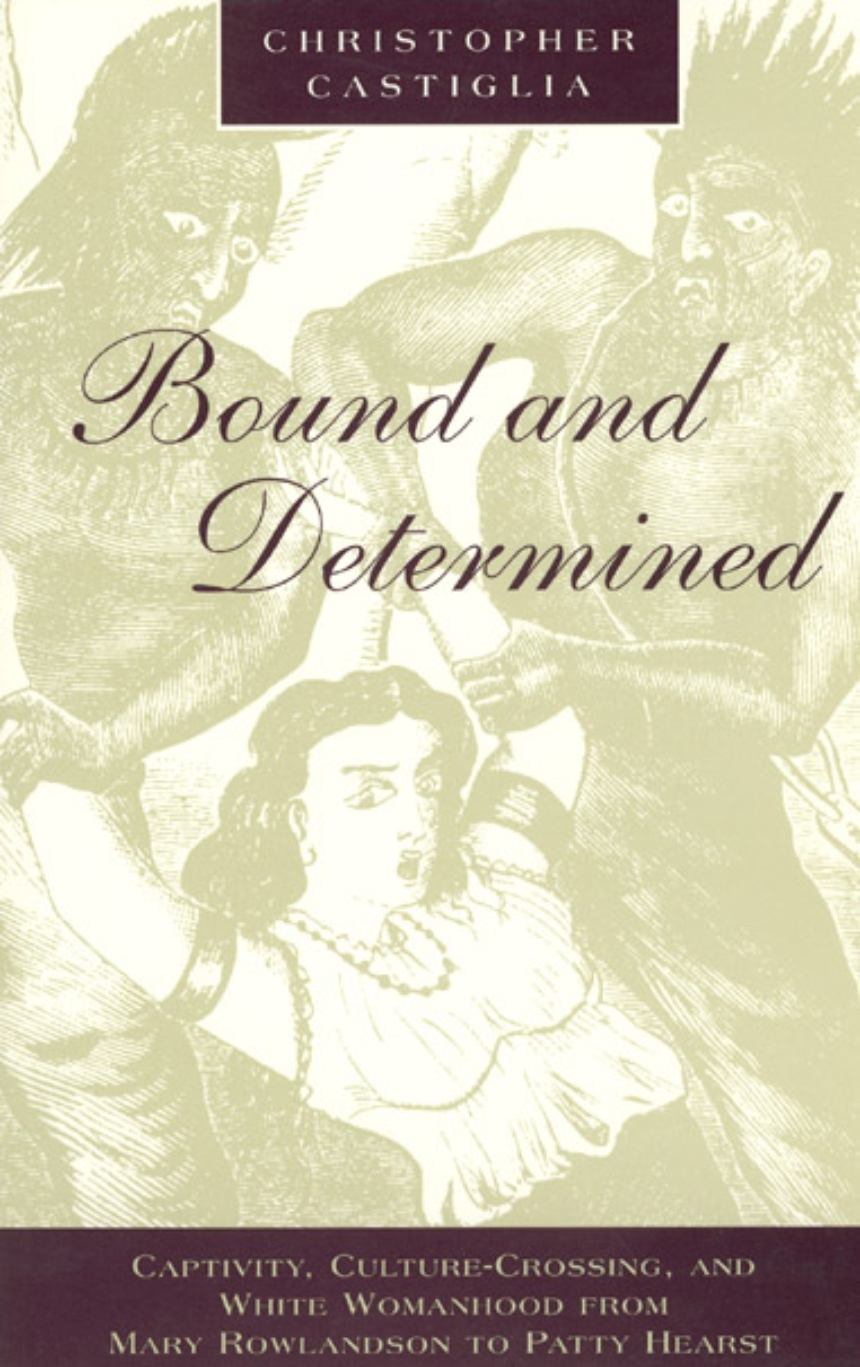Bound and Determined
Captivity, Culture-Crossing, and White Womanhood from Mary Rowlandson to Patty Hearst
9780226096544
9780226096520
Bound and Determined
Captivity, Culture-Crossing, and White Womanhood from Mary Rowlandson to Patty Hearst
In Bound and Determined, Christopher Castiglia gives shape for the first time to a tradition of American women’s captivity narrative that ranges across three centuries, from Puritan colonist Mary Rowlandson’s abduction by Narragansett Indians to Patty Hearst’s kidnapping by the Symbionese Liberation Army.
Examining more than sixty accounts by women captives, as well as novels ranging from Susanna Rowson’s eighteenth-century classic Rueben and Rachel to today’s mass-market romances, Castiglia investigates paradoxes central to the genre. In captivity, women often find freedom from stereotypical roles as helpless, dependent, sexually vulnerable, and xenophobic. In their condemnations of their non-white captors, they defy assumptions about race that undergird their own societies. Castiglia questions critical conceptions of captivity stories as primarily an appeal to racism and misogyny, and instead finds in them an appeal of a much different nature: as all-too-rare stories of imaginative challenges to rigid gender roles and racial ideologies.
Whether the women of these stories resist or escape captivity, endure until they are released, or eventually choose to live among their captors, they end up with the power to be critical of both cultures. Castiglia shows that these compelling narratives, with their boundary crossings and persistent explorations of cultural divisions and differences, have significant implications for current critical investigations into the construction of gender, race, and nation.
Examining more than sixty accounts by women captives, as well as novels ranging from Susanna Rowson’s eighteenth-century classic Rueben and Rachel to today’s mass-market romances, Castiglia investigates paradoxes central to the genre. In captivity, women often find freedom from stereotypical roles as helpless, dependent, sexually vulnerable, and xenophobic. In their condemnations of their non-white captors, they defy assumptions about race that undergird their own societies. Castiglia questions critical conceptions of captivity stories as primarily an appeal to racism and misogyny, and instead finds in them an appeal of a much different nature: as all-too-rare stories of imaginative challenges to rigid gender roles and racial ideologies.
Whether the women of these stories resist or escape captivity, endure until they are released, or eventually choose to live among their captors, they end up with the power to be critical of both cultures. Castiglia shows that these compelling narratives, with their boundary crossings and persistent explorations of cultural divisions and differences, have significant implications for current critical investigations into the construction of gender, race, and nation.
268 pages | 6 halftones | 5-1/2 x 8-1/2 | © 1996
Literature and Literary Criticism: American and Canadian Literature
Table of Contents
Series Editor’s Foreword
Acknowledgments
Introduction: Captivity Is Consciousness: Captivity, Culture-Crossing, and
the Revision of Identity
1: A More Interesting Adventure: Critics, Captives, and Narrative Dissent
2: Her Tortures Were Turned into Frolick: Captivity and Liminal Critique,
1682-1862
3: That Was Not My Idea of Independence: The Captivity of Patty Hearst
4: The Wilderness of Fiction: From Captivity Narrative to Captivity Romance
5: Captives in History: Susanna Rowson’s Reuben and Rachel
6: A Hostage in the House: Domestic Captivity and Catharine Sedgwick’s Hope
Leslie
Conclusion: Contemporary Captives
Notes
References
Index
Acknowledgments
Introduction: Captivity Is Consciousness: Captivity, Culture-Crossing, and
the Revision of Identity
1: A More Interesting Adventure: Critics, Captives, and Narrative Dissent
2: Her Tortures Were Turned into Frolick: Captivity and Liminal Critique,
1682-1862
3: That Was Not My Idea of Independence: The Captivity of Patty Hearst
4: The Wilderness of Fiction: From Captivity Narrative to Captivity Romance
5: Captives in History: Susanna Rowson’s Reuben and Rachel
6: A Hostage in the House: Domestic Captivity and Catharine Sedgwick’s Hope
Leslie
Conclusion: Contemporary Captives
Notes
References
Index
